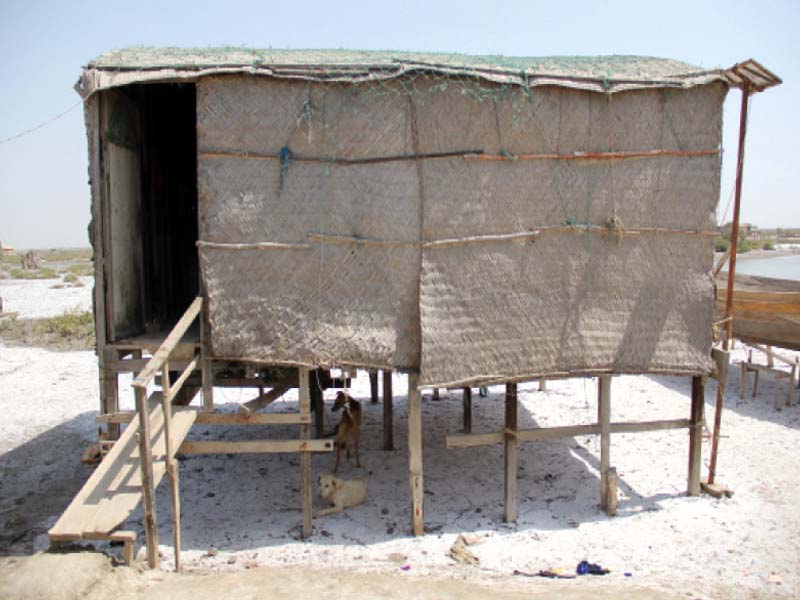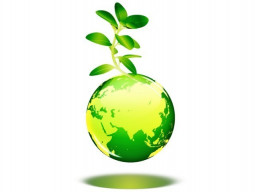
Around 170 kilometres away from Karachi is the Indus Delta, where the mighty River Indus meets the Arabian Sea. It is here that the water levels are rising, forcing people to literally lift up their homes.
The residents of Siddique Dablo village, near Indus Delta, have braved several cyclones and are losing more and more of their land to the sea. One solution that they have reached for now is building their homes over elevated wooden platforms so that their properties stay safe in case of floods and tidal waves.
The World Wide Fund for Nature -Pakistan (WWF-P) has built these platforms for the villagers by declaring the island as a model village for elevated homes. Ten platforms have been set so far and rest of them are under construction.
Environment protection: ‘Pakistan highly vulnerable to climate change’
Bleached with sunlight, Muhammad Akram's high home is the most visible between the few patches of mangroves and wooden shacks. Each house costs roughly Rs100,000 of which WWF-P provides around Rs70,000 for the basic platform and the wooden frames. The remaining cost for the stairs, hut and the roof is shared by the home owners. A majority of the fishermen who live in this village are unable to pay for the remaining expenses but Akram is one of the few who managed to complete his house.
"Here, I live happily with my wife after we got married recently," shared Akram, as he spoke to The Express Tribune. He led the way into the house, which is located on the edge of a mudflat facing direct threat of tidal surges and frequent cyclones. "Many homes were severely damaged during the Nanauk cyclone [in 2014] but my house provided me shelter," he said. After Cyclonic Storm Nanauk hit this coast in June 2014, the water level in the village stayed as high as three feet for nearly 10 days.
Many fishermen had saved their supplies in these elevated structures so they did not suffer as many damages as the past, where the floods swept away their groceries and clothes. Relocation is not an option as fishing sources are declining fast. The salty water also makes agriculture a difficult job in the area, further restricting livelihood options for these men.
Natural resources in coastal belt in danger, experts warn
Shrinking delta
The recent effects of climate change have made Indus Delta highly vulnerable to cyclones, which have become more frequent in the Arabian Sea. According to a report published by the meteorological department of Pakistan, tropical cyclones that caused high waves to surge in the Indus Delta were recorded in the years 1999, 2007, 2009, 2010, 2011 and 2014.
Due to trapping of sediments and diversion the fresh water, the size of the active delta has been reduced to merely 1,200 square-kilometres (km) from 6,200 square-km, according to a research paper published by the National Institute of Oceanography in 2007. The situation was worsened by the construction of more than a dozen dams and barrages constructed between 1932 and 1976.
Now, the Indus Delta has shrunk to a level where sea water has intruded to almost 50km upstream to the main course of River Indus, causing havoc in the seventh largest and most fertile delta of the world. Now all of its 17 creeks are filled with brackish water, according to research published by Lead Pakistan, an NGO working for climate change.
"I heard that the River Indus' fresh water once flowed from here but I have only witnessed brackish sea water in the delta during my whole life," said fisherman Akram.
"The island is shrinking very fast," said Ismail, a resident of the Siddique Dablo village. Standing near his unfinished elevated house, he pointed out that this is the only area where it is possible to catch fish and shrimps. "We are bound to live here just for the resources."
A WWF-Pakistan 2005 survey of the main towns and creeks shows a major drop in fish catch in the last 10 years. Catfish, pomfret, croacker, carracuda catch has dropped to 60 per cent and the pallah or Indus shad, the most delicious fish of South Asia, has nearly vanished.
Hammered with erratic weather, cyclones and climate change, the Indus Delta urgently needs at least 10 million acre feet of fresh water to restore its fauna and avoid rapid land erosion. This water would have been available after the Indus Water Accord of 1991 but the agreement was never fulfilled as the agriculture demands for freshwater always took priority.
Elevated homes are able to offer temporary relief to the helpless deltaic community but there is a need for authorities to take concrete steps to address the larger issue of the shrinking Indus Delta.
Published in The Express Tribune, January 3rd, 2016.




































COMMENTS (1)
Comments are moderated and generally will be posted if they are on-topic and not abusive.
For more information, please see our Comments FAQ